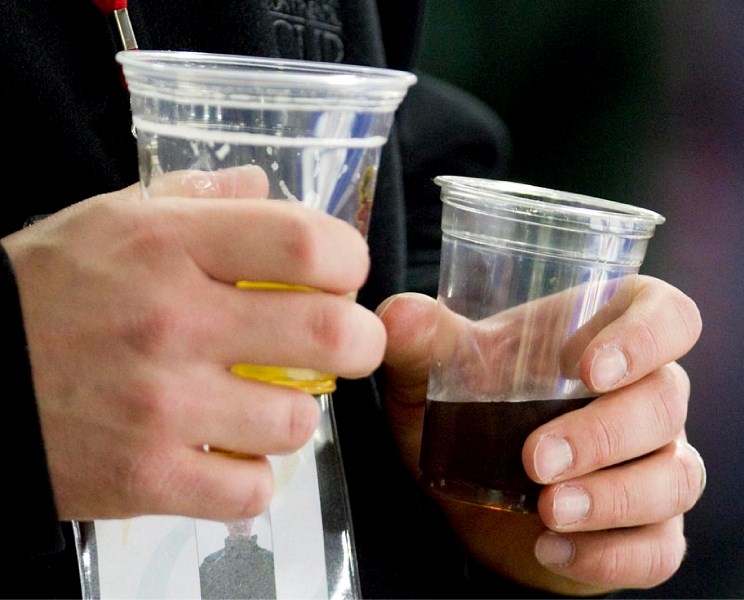Did you have a good time at a recent professional sports game? That might be because eight per cent of you were drunk.
The Continental Cup curling championship was held in St. Albert last month. Some 2,200 people visited the event’s bar during the game, says volunteer bar manager Laurie Andrews, buying some 11,000 beers.
A new study published last month suggests that eight out of every hundred people at professional sports games are legally drunk. The study, thought to be the first of its kind, used a breathalyzer to measure the blood-alcohol levels of people over the age of 21 as they left some 16 American baseball and football games.
Of the 362 people tested, some eight per cent had 0.08 or more grams of alcohol per 100 millilitres of blood, meaning they were legally drunk. At least one of those persons was almost three times the legal limit.
Age and tailgate parties both raise your risk of being drunk, says Darin Erickson, an assistant professor of epidemiology at the University of Minnesota and lead author of the study. People under 35 were eight times more likely to be legally drunk than those over 35, while those who went to a tailgate party before the game were 14 times more likely to be drunk.
These drunken fans put communities at greater risk for crashes, falls and fights, Erickson says, and often number in the thousands — a typical MLB, NFL or NCAA football game might have about 50,000 people in the stands. “Eight per cent (of that) is a lot of people who are leaving that game intoxicated.”
Beer companies often sponsor professional sports events, says Matt Herod, president of the St. Albert Rugby Club and security volunteer at the Continental Cup, so it’s little surprise some fans would get intoxicated.
“I think (eight per cent) is a little low, to be honest,” he says — he guessed up to 20 per cent of the people in Keith’s Patch (the bar for the Continental Cup) were over the legal limit on the Friday night of the event.
Troublemakers were few and far between, he continues — he knew of just one person who had to be escorted out because of drunkenness. “The main thing is to make sure they’re not driving,” he says, a message hammered home by guards, DJs and numerous wall signs.
Andrews agrees with the study’s conclusion, saying that about eight per cent of most sports fans probably have too much to drink. Curling tends to attract an older crowd, he adds, one that’s less likely to get falling-down drunk.
Most sports games are sedentary affairs for fans, Andrews says, which contributes to drunkenness. “You sit there for three hours and don’t do a thing … all you do is drink.”
More police at games could help keep drunks from driving, Andrews says, as could volunteer breathalyzer tests.
Bartenders also need to be better trained to spot drunks, Erickson says. Even though it’s illegal to sell alcohol to someone who’s intoxicated, actors in his study who pretended to be drunk were able to buy beer at games 74 per cent of the time. “Clearly, there’s room for improvement there.”
Drunks can be tough to spot, Andrews adds, especially since many get other people to buy them drinks. “About all you can do is try and monitor their actions.”
Many of his volunteers went through the ProServe program to learn how to identify drunken behaviour.
Drinkers should use common sense to stay sober at games, Andrews says: keep active and have something to eat. “Nobody really wants to know how drunk they are or be told they’re too drunk to drive home … but it only takes that one to be in a bad accident.”
Erickson’s study can be found in the latest issue of Alcoholism: Clinical Experimentation and Research.




